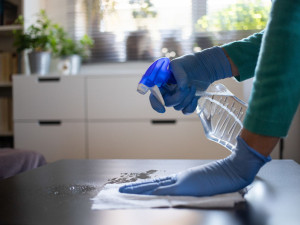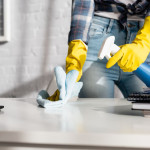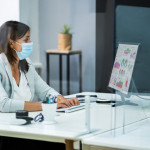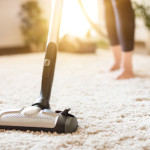 If you’re more worried about germs than ever before, you’re not alone. After living through the COVID-19 pandemic, many people have developed real fears about germs and bacteria. In fact, in a 2021 survey of 2000 adults, 42 identified themselves as ‘germaphobes.’ Germaphobe is a popular term for a person who hates the idea of touching something unclean or crawling with bacteria. Typically the term is applied to people who are overly fastidious about cleaning and disinfecting, in some cases to the point of distress. So it makes sense that during a time of collective uncertainty and fear like the COVID-19 pandemic, many people would begin to develop real concerns about germs and bacteria and develop unhealthy disinfecting practices.
If you’re more worried about germs than ever before, you’re not alone. After living through the COVID-19 pandemic, many people have developed real fears about germs and bacteria. In fact, in a 2021 survey of 2000 adults, 42 identified themselves as ‘germaphobes.’ Germaphobe is a popular term for a person who hates the idea of touching something unclean or crawling with bacteria. Typically the term is applied to people who are overly fastidious about cleaning and disinfecting, in some cases to the point of distress. So it makes sense that during a time of collective uncertainty and fear like the COVID-19 pandemic, many people would begin to develop real concerns about germs and bacteria and develop unhealthy disinfecting practices.
First, disinfecting is not cleaning. Cleaning removes germs and bacteria from surfaces, like when you dust your bookshelf or wipe the table after dinner. But disinfecting uses a disinfectant agent to kill the bacteria on the surface, which is helpful in certain situations. For example, we rely on disinfecting practices to prevent the transmission of bodily fluids or viruses in hospitals. But in our everyday lives, too much disinfectant can be a bad thing.
We live our lives surrounded by more germs and bacteria than we realize, and that’s a good thing. The germs and bacteria around us are called microbes, and they help us build up our immune systems and improve our gut health. Antibacterial disinfecting agents kill these microbes, affecting our long-term health. But unfortunately, research also shows that long-term exposure to some disinfectants can be harmful over time, causing hormone disruptions, infertility, lung issues, and even cancer.
So how do you know when to disinfect and when to clean? It’s pretty straightforward. You only need to disinfect surfaces in contact with potentially harmful bacteria or germs like E.coli, salmonella, or viruses. For example, one of the standard safety practices many businesses have adopted during the pandemic is to disinfect high touchpoints in busy areas because the disinfectant kills COVID-19 bacteria on surfaces touched by many people.
In your own business or home, it’s up to you to decide when it’s appropriate to clean and when to disinfect. You may need to follow industry safety regulations or best practices in some cases. If you aren’t sure, ask us. Our team is highly knowledgeable and can help you make the right cleaning and disinfecting decisions for your business.








